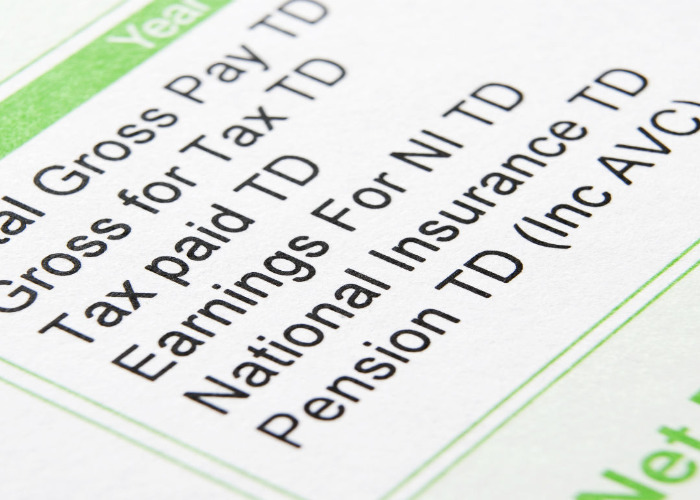Office of Tax Simplification: National Insurance ‘not fit for purpose’

Calls to align National Insurance more closely with Income Tax, but will you be better or worse off?
The rise of ‘multi-jobbers’ and the self-employed has rendered the UK’s National Insurance tax system ‘not fit for purpose’ according to a new report.
The Office of Tax Simplification (OTS) says National Insurance Contributions (NICs) should be more closely aligned with how Income Tax is calculated.
An overhaul, it suggests, will alleviate distortions in the tax system, reduce admin and make the tax easier to understand for businesses and individuals.
However, while millions of workers could benefit from the changes in the long term through better access to benefits, millions will end up paying more.
How Income Tax and NICs work
Currently workers have to pay Income Tax and NICs on their earnings, but the taxes are applied in two different ways.
Income Tax is based on annual earnings while NICs are collected by job and pay period.
Also the rate of Income Tax on earnings is split into three bands, while NICs have a range of different ‘classes’ that apply to workers, employers and the self-employed.
The complicated system is hard to administer for both HMRC, the self-employed and employers, it doesn’t really fit in with modern work patterns and can lead to big distortions in what people pay.
For example, someone earning £15,000 a year could pay from just £880 up to £1,712 in Income Tax and NICs depending on how many firms they work for and how their earnings are spread out across the year. See the table below.
Winners and losers of change
The OTS report sets out a seven-stage programme to align the two taxes closer together for a simpler system that fits in better with modern working life.
- Moving to an annual, cumulative and aggregate (ACA) system for NICs similar to Income Tax.
- Basing employers' NICs on whole payroll costs and renaming the charge.
- Aligning the self-employed NICs more closely with the employees’ NICs – and benefits.
- Improving transparency for what NICs go towards.
- Aligning the definition of both earnings and expenses for income tax and NICs.
- Bringing taxable benefits-in-kind into Class 1 NICs.
- Having a joined-up approach for income tax and NICs laws and practice.
The OTS says overall receipts raised from the changes would be the same but some would pay more and some less.
HMRC estimates 7.1 million workers would pay an average of £175 a year less NICs – saving a total of £1.2 billion. Those who would pay less were more likely to be lower earners. Currently, workers juggling a number of low-paid jobs can avoid National Insurance if the amount they earn from each is below the threshold of £672 a month.
However, 6.3 million workers would pay an average of £275 a year more – bringing in a total of £1.7 billion. The report said those juggling several jobs could end up paying more however they would also benefit from improved benefit entitlements for the first time. This is especially true for the UK’s 4.7 million and rising self-employed workers.
What Income Tax and NICs fund
The money raised from Income Tax and NICS are paid into two separate pots and are used to fund different things.
Income Tax is paid into a Consolidated Fund, used for general public spending on things like schools and infrastructure. Crucially there isn’t a direct link between what you pay in and what you get back.
National Insurance Contributions on the other hand are paid into the National Insurance Fund and 80% of it is used to fund certain benefits, while 20% goes towards the cost of the NHS. Entitlement relates to an individual’s record of contributions so there is a stronger link between what you pay in and what you get out.
The OTS says as much as 94% of benefits funded by the National Insurance Fund go on state pensions, but other benefits like contributory Jobseeker's Allowance, Maternity Allowance and bereavement benefits are also funded by these contributions.
When can we expect change?
The differences between Income Tax and NICs have long been regarded as a major source of complexity in the UK tax system.
In the summer Budget 2015 the Chancellor asked the OTS to consider the impacts, costs and benefits as well as set out the steps necessary for closer alignment.
But before an overhaul of the system the OTS recommends that more work needs to be done to understand the impact and how the changes should be implemented.
Angela Knight, OTS Chair, said: “Inevitably, some will gain and others will lose from any change. By highlighting both the need for reform and by shining a light on those difficult areas now, the OTS intends this review to trigger a full and informed debate about the impacts, how the changes could be made, how the challenges can be addressed and the timetables required, to make change as seamless as possible and to provide a system that is fit for the future.
The OTS is inviting interested parties to comment on the proposals using via ots-tax-nics@ots.gsi.gov.uk.
Avoid tax on your savings: compare Cash ISAs
Read these next:
Budget 2016: what the experts think will happen
Brexit 2016: how it would affect property prices, air fares, petrol, pensions, jobs and more
Comments
Be the first to comment
Do you want to comment on this article? You need to be signed in for this feature